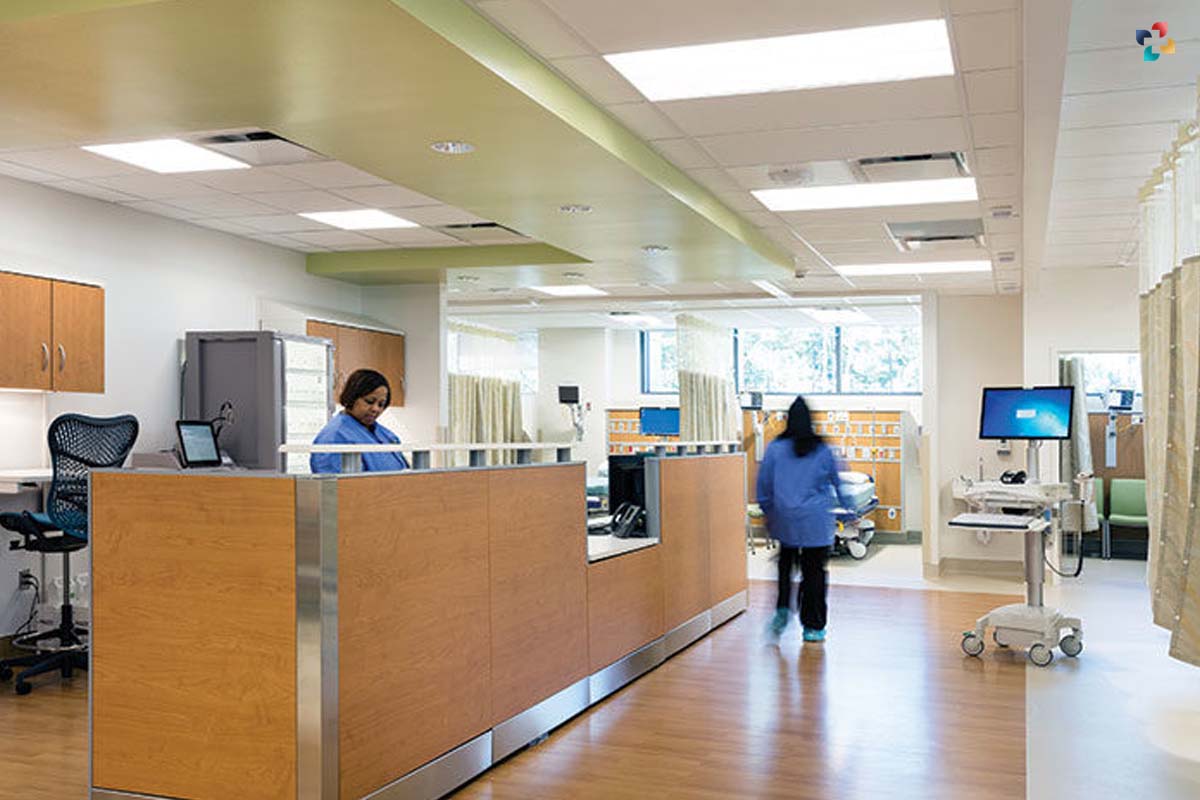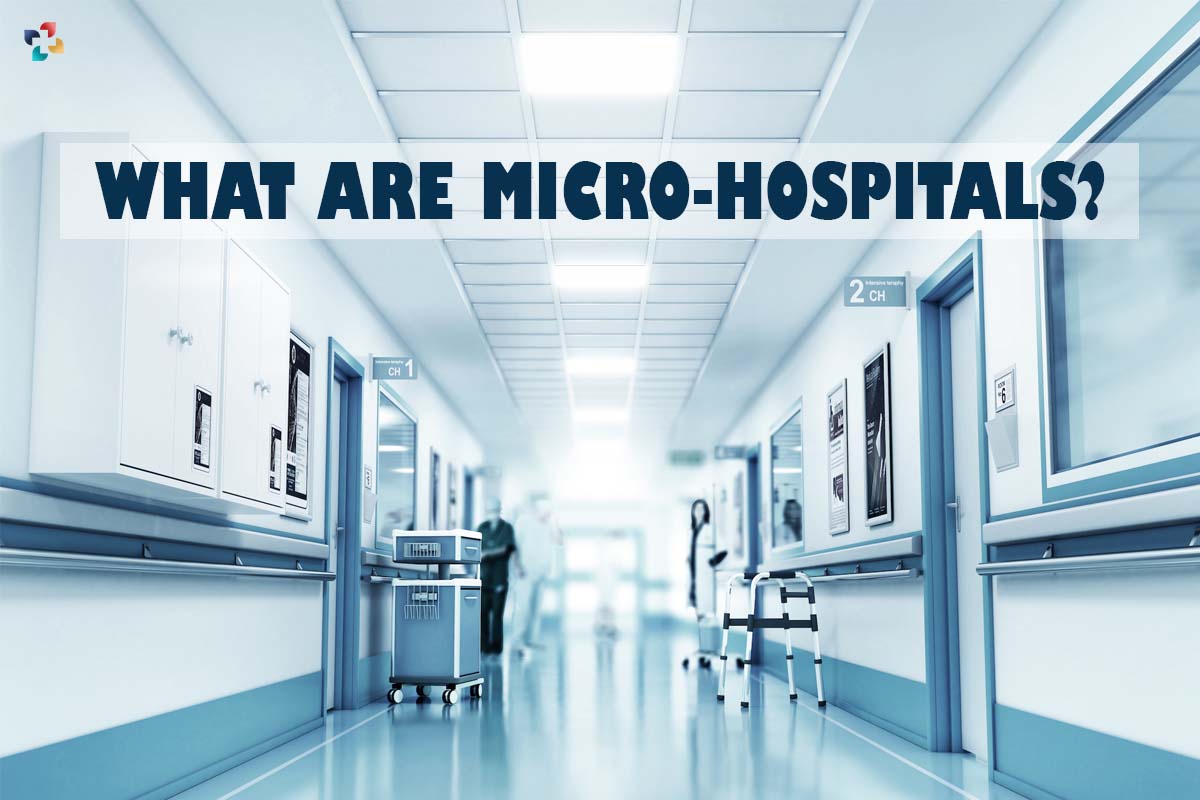Micro-hospitals are small-scale inpatient facilities that are located on two to three-story buildings that are erected on 20,000 to 50,000-square-foot areas. These facilities provide a broad variety of medical treatments in an environment that is more intimate and localized. If you want to understand ‘What are Micro-Hospitals?’ then read this blog.
Patients may be admitted for observation or for a brief stay at any time of day or night, and the facility typically has between eight and ten beds available for their use. Micro-hospitals are being used by a variety of health systems, like SCL Health and Dignity Health, in order to extend their service offerings and cover gaps in places where there is not enough demand to maintain regular hospitals.
Here are 7 Points of What are Micro-Hospitals?
1. What kinds of medical care are provided at micro-hospitals?
Although not all micro-hospitals will have the same layout or combination of services, the majority of them will include emergency medical treatment, imaging services, inpatient care, laboratory and laboratory services, and pharmacy services.

Some of them even have operating rooms so they can do complex surgical procedures. Some others provide primary care, labor and delivery services, nutritional services, and pediatric care in addition to their other auxiliary services.
2. What kind of prices do they have?
Prices at micro-hospitals are often higher than those at urgent care clinics, but they are far lower than those at full-service hospitals and inpatient facilities. As a result, their prices fall somewhere in the middle. They are able to treat patients who are experiencing severe stomach discomfort, sprained and fractured bones, dehydration, heart attacks, pneumonia, seizures, mild injuries, bladder infections, lacerations, and a variety of other illnesses.
- emergency medical treatment
- diagnostic capabilities
- Memorial Hermann’s EVPc

3. How are they different from traditional emergency departments that are located in standalone buildings?
Additionally, during the last several years, there has been an increase in the number of emergency departments (EDs) that operate independently from other hospitals. Both the micro-hospitals and the emergency departments (EDs) have the resources necessary to address a variety of emergent situations, including imaging, laboratory, and certain diagnostic capabilities.

Micro-hospitals, on the other hand, vary from traditional hospitals in that they are fully licensed, have inpatient beds, and in some cases provide both primary and specialist care services.
4. Where do you see the development of micro-hospitals going?
It is not expected that the current upward trend of micro-hospitals will experience a slowdown in the foreseeable future. As of right now, the majority of micro-hospitals are located in big urban and suburban metropolitan regions. This is due to the fact that it is believed that the rural market is not ready for such complicated or massive facilities. On the other hand, there are professionals who are of the opinion that the facilities would also be beneficial for those living in underserved regions, which would assist populations who do not have access to medical treatment.
5. What are the difficulties with micro-hospitals?
Micro hospitals have some initial cost issues. Micro hospitals have a lower financial footprint than other alternative care delivery facilities in the long term. However, the expense of establishing the micro-hospital might be catastrophic.
Memorial Hermann’s EVP, Bradshaw, also mentioned some expected care coordination problems when the Texas-based hospital system absorbed two additional micro-hospitals. Exchanging medical data and communicating with diverse providers proved difficult.
“I anticipate that the coordination efforts of how we serve the community and make schedules accessible to patients and message to the marketplace will need some excellent, detailed time with each other,” Bradshaw said at the time.
Many health systems are establishing their own micro-hospitals, which may help ease some of the care coordination issues. There will be fewer data interchange and interoperability difficulties if micro-hospitals employ the same EHR and system requirements as related hospitals and primary care clinics.
Micro hospitals that are not affiliated with a patient’s primary care physician, on the other hand, may have problems obtaining the patient’s medical history. To bridge gaps between various providers, more interoperable technologies and health information sharing are required.
6. What effect do micro-hospitals have on patient access to care?
Micro hospitals, in general, make patient access to treatment considerably simpler. These facilities are satisfying patients’ requirements for accessible and cost-effective treatment as healthcare becomes more consumer-centric.
“The widespread consensus is that customers have increased expectations in healthcare,” Bradshaw said. “As an industry, we must increase our ability to meet those expectations.”
“We won’t be clever enough to have one item that meets the demands of customers for primary care, urgent care, and emergency care,” Bradshaw continued. “As a result, our objective is to develop both off the phone, off the internet platform, and with physical places to be as handy to the user as possible.”
According to the USC analysis, micro-hospitals are mostly found in urban and suburban regions due to their promise of convenience.
According to the report’s authors, some experts say that micro-hospitals are not a suitable match for bridging patient care access shortages in rural regions. Micro hospitals, according to medical experts, are too vast and complicated to meet the demands of such communities. Urgent care facilities and freestanding EDs are ostensibly addressing voids where they exist.
Separate market studies, on the other hand, imply that micro-hospitals are a suitable match in rural areas.
“Micro-hospitals may bridge the gap in care delivery and quality of healthcare in disadvantaged communities. Micro-hospitals are appropriate in rural regions due to their affordable nature and intimate delivery methodology,” according to one Future Marketing Insights analysis.
Rural locations lack the personnel and financial resources to create many fully staffed emergency departments. However, with just one ED every several hundred miles, patients have limited access to emergency treatment.
Although freestanding EDs and urgent care clinics may address certain gaps, some experts say that the micro-hospital allows patients to get higher-tier medical treatment without incurring significant financial costs to themselves or healthcare providers.
7. Will the usage of Microhospitals grow across the industry?
Micro hospitals are a relatively recent phenomenon in the healthcare business, making it impossible to forecast how they will do in the future. According to industry assessments, the increasingly consumer-centric nature of healthcare has made the time ideal for micro-hospitals.
“Rising health care demand due to the need for more intense service offerings locally that conventional hospitals cannot give,” according to the Future Marketing Insights research.
“Growing technology together with the increased expectation of patients in the healthcare system represents a big challenge to large-scale hospitals and provides the possibility to micro-hospitals. All of these reasons are pushing the micro-hospital market forward. Micro-hospitals are changing the healthcare landscape by becoming an essential component of the healthcare system.”
Memorial Hermann’s Bradshaw and his staff were also preparing for a greater focus on micro-hospitals. The health system partnered with two micro-hospitals to address consumer requirements and make it easier for patients to receive treatment. Bradshaw intended to continue capitalizing on this potential opportunity.
“As part of our collaboration, we are meticulously sketching out the next several sites, which may even begin to grow outside the Houston [Metropolitan Statistical Area] into nearby communities,” Bradshaw said. “We are in conversations with little cities that trade-off with the Houston MSA.”
Consumerism in healthcare is unlikely to disappear. Medical practitioners will attempt to address some of those objectives as long as meeting patient needs remains a healthcare necessity. Installing micro-hospitals allows patients to obtain treatment more readily and at a lesser cost than the ED, making them a feasible alternative for future patient care access.
Bottom Line
The micro-hospital sector has grown substantially in the last 5 years. The hospitals enable access to medical care while saving travel costs for those in need. Because of their complexity, most micro-hospitals are built in urban areas. However, it remains to be seen how the sector develops further for the benefit of people in rural areas.








